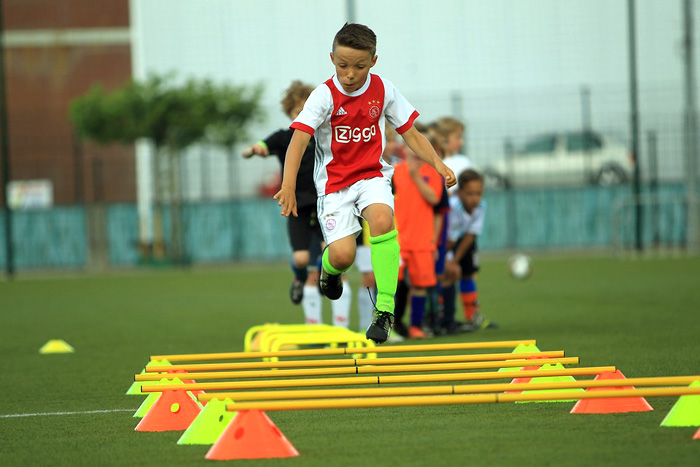Agility is the ability to change body position or direction of the body rapidly. This ability is measured with running tests that require the subject to turn or start and stop. Agility is also influenced by balance, coordination, the position of center of gravity, running speed, acceleration and skill. There is a school of thought that agility tests must involve a reaction to a stimulus, an element of perceived good on-field agility. Without a reaction stimulus, it is a test of change of direction (COD). As running speed is a large component of agility test results, this can be factored in using Change of Direction (COD) Deficit.
Agility is always a difficult area to test. The agility demands for different sports is very specific, in terms of the speed and direction of turning, and often includes extra factors like controlling a ball or holding a stick. Many agility tests involve complex movements, and what is actually being measured may not be clear, and a good score may hide deficiencies in some aspect of agility. The ability to change direction (COD) quickly is just one component of agility, and additionally by calculating the COD deficit you can isolate the turning ability from running speed.
When testing for agility you need to decide which aspect of the sport-specific testing you want to investigate. There are many agility tests to choose from. Some research suggests that for example turning at 90 degrees is very different from turning at 120 degrees, and being good at one doesn't necessarily mean you will be good at turning at the other. It is also possible that turning in one direction, e.g. turning left, will be worse than turning right, and turning on one foot is different from the other.
 young boys football agility training
young boys football agility trainingA test of agility should not last too long, to reduce the contribution of the anaerobic capacity. The tests should also not include any longer straight sprint distances to reduce the effect of sprinting speed.
You have to be careful in the interpretation of agility tests as you need to know what they are exactly measuring. It is better to break down the agility movements you want to measure into individual factors and measure each individually, such as turning left versus turning right, turning at different angles. It is often easier to just make up the tests yourself, as differences in surfaces used often make comparisons to other norms difficult.
Agility can be improved by practicing specifically for a sport but also by improving the specific individual elements of speed, balance, power and coordination.
Related Pages
- List of Agility Fitness Tests
- About Change of Direction (COD) Deficit
- About Agility Fitness
- Timing in Sports
- What are the highest ranking sports requiring agility?


 Current Events
Current Events